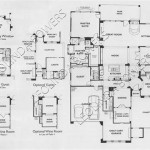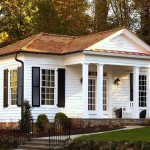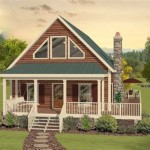```html
Small Spanish Style Home Plans: A Guide to Design and Features
Spanish-style homes, known for their romantic charm and distinctive architectural elements, offer a unique blend of history and practicality. When considering small Spanish-style home plans, the focus shifts to maximizing livability within a compact footprint while retaining the essential characteristics that define this architectural style. This article explores the key aspects of designing and implementing small Spanish-style home plans, highlighting the features, considerations, and potential benefits of this design approach.
Key Elements of Small Spanish Style Architecture
Small Spanish-style homes typically incorporate several defining features that contribute to their aesthetic appeal and functionality. These elements are adapted to suit smaller spaces without compromising the overall architectural integrity.
One prominent feature is the use of stucco exteriors. Stucco, a durable and versatile material, provides a distinctive textured surface that is characteristic of Spanish-style architecture. The color palette often leans towards warm, earthy tones like white, beige, and terracotta, reflecting the Mediterranean origins of the style. Using lighter shades can also help to create a sense of spaciousness in a smaller home.
Another key element is the incorporation of red tile roofing. The curved clay tiles are not only visually appealing but also provide excellent insulation and weather resistance. While traditional clay tiles can be heavy, modern alternatives made from lighter materials are available to reduce the structural load on the building. The distinctive roofline contributes significantly to the overall aesthetic of the home.
Arches and curves are also central to the Spanish style. Arched doorways, windows, and passageways soften the lines of the structure and create a sense of fluidity. The use of curved details can be strategically incorporated to add visual interest and a touch of elegance to a small space. Interior archways can define different living areas without the need for solid walls, thus maintaining an open and airy feel.
Wrought iron detailing is another hallmark of Spanish-style homes. Wrought iron is commonly used for window grilles, balcony railings, and decorative accents. It adds a sense of craftsmanship and authenticity to the design. In small homes, wrought iron can be used sparingly but effectively to create a focal point without overwhelming the space. Lighting fixtures, such as sconces and chandeliers, often incorporate wrought iron elements to complement the overall style.
Courtyards and patios are integral to the Spanish-style home, providing outdoor living spaces that seamlessly integrate with the interior. In small home plans, a smaller courtyard or patio can serve as an extension of the living area, creating a private and tranquil retreat. These spaces are often enclosed by walls or fences to provide privacy and protection from the elements. The addition of a fountain or greenery can enhance the ambiance of the courtyard and create a relaxing atmosphere.
Maximizing Space in Small Spanish Style Homes
Designing a small Spanish-style home requires careful planning to maximize the available space and ensure comfortable living. Several strategies can be employed to achieve this goal.
Open floor plans are particularly effective in creating a sense of spaciousness in small homes. By minimizing the number of interior walls, the living, dining, and kitchen areas can flow seamlessly into one another, creating a larger and more inviting space. This open concept allows for better natural light penetration and improved airflow throughout the home.
Vertical space can be utilized to create additional storage and living areas. High ceilings can make a small room feel larger, and lofts can be incorporated to provide extra sleeping or storage space. Built-in shelves and cabinets can be used to maximize storage capacity without taking up valuable floor space. Utilizing the height of the room can significantly improve the functionality of a small home.
The strategic placement of windows and doors is crucial for maximizing natural light and ventilation. Large windows and glass doors can bring in plenty of natural light, making the interior feel brighter and more cheerful. Skylights can also be used to introduce natural light into areas that may not have access to windows. Proper ventilation is essential for maintaining a comfortable indoor environment, especially in warmer climates.
Multifunctional furniture can be used to optimize space utilization. Sofa beds, folding tables, and storage ottomans can serve multiple purposes, reducing the need for separate pieces of furniture. Choosing furniture that is appropriately scaled for the size of the home is also important. Oversized furniture can make a small room feel cramped and cluttered.
Outdoor living spaces, such as patios and courtyards, can effectively expand the living area of a small home. These spaces can be used for dining, entertaining, or simply relaxing. By blurring the lines between indoor and outdoor living, a small home can feel much larger and more connected to its surroundings. Outdoor kitchens, fireplaces, and seating areas can enhance the functionality and enjoyment of these spaces.
Considerations for Implementing Spanish Style Home Plans
When implementing small Spanish-style home plans, several factors should be considered to ensure a successful outcome. These considerations range from material selection to energy efficiency and cost management.
Material selection plays a crucial role in achieving the desired aesthetic and ensuring the durability of the home. While traditional materials like stucco and clay tiles are characteristic of the Spanish style, modern alternatives can offer improved performance and cost-effectiveness. Synthetic stucco, for example, is more resistant to cracking and moisture damage than traditional stucco. Lightweight roofing materials can reduce the structural load on the building and simplify installation. Sourcing materials locally can also help to reduce costs and environmental impact.
Energy efficiency is an important consideration for any home design, but it is particularly relevant in warmer climates where Spanish-style homes are common. Proper insulation, energy-efficient windows, and strategic shading can help to reduce energy consumption and lower utility bills. Solar panels can be incorporated into the design to generate renewable energy. Passive cooling strategies, such as natural ventilation and shading, can also help to keep the interior cool during the summer months.
Cost management is essential for any construction project, especially when building a small home. Careful planning and budgeting can help to avoid unexpected expenses and ensure that the project stays within budget. Obtaining multiple bids from contractors and suppliers can help to ensure that you are getting the best possible price. Prioritizing essential features and finishes can also help to reduce costs. DIY projects can be undertaken to save money on labor costs, but it is important to have the necessary skills and experience to complete these projects successfully.
Local building codes and regulations must be adhered to when designing and constructing a small Spanish-style home. These codes and regulations may dictate the allowable size, height, and setbacks of the building. They may also specify requirements for structural integrity, fire safety, and accessibility. Obtaining the necessary permits and inspections is essential for ensuring that the project complies with all applicable regulations.
Landscaping can play a significant role in enhancing the appeal of a small Spanish-style home. Drought-tolerant plants and native species can be used to create a low-maintenance and water-wise landscape. Patios, courtyards, and fountains can be incorporated into the landscape to create a tranquil and inviting outdoor space. The landscape should complement the architectural style of the home and create a seamless transition between the interior and exterior.
```
Small Spanish Contemporary House Plan 61custom Modern Plans Style Homes

Spanish Style Plans 1900 To1935 Vintage House Homes

Spanish Colonial Home Plans Sater Design Collection

Bungalow House Plans Spanish Style Homes Craftsman

1927 Radford Zamora Spanish Eclectic Style Small House Design Inspiration Vintage American Architure

Small Spanish Contemporary House Plan 61custom Modern Plans

Spanish Revival Style Home 1926 Universal Plan Service No 543 House Plans Portland Homes

House Plan Mercato Sater Design Collection

Bungalow House Plans Colonial Mediterranean

Small Spanish Style Home Plans Blueprints








